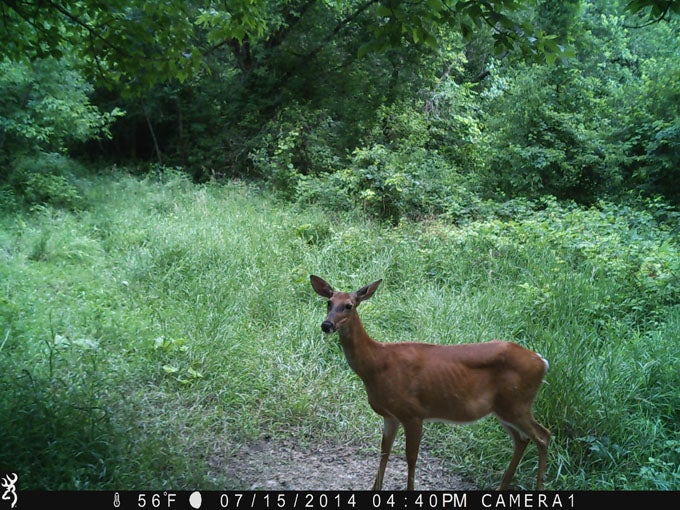The Myth of the “Old Dry Doe”
July is the start of the summer trail-cam season for me, so I’ve been pulling SD cards in hopes of...

July is the start of the summer trail-cam season for me, so I’ve been pulling SD cards in hopes of finding a nice buck or two to chase this fall. But because I also use cameras to conduct a census on the deer populations in my area, I pay attention to the relative abundance of does and fawns, too. Which brings me to this monster doe. She’s a huge-bodied, cow-headed female that has posed for one of my cameras dozens of times over the last 12 days. And she has yet to drag a fawn along.
There was a time, sucked in by conventional wisdom, that I might have labeled this obviously mature animal “an old dry doe.” In many hunters’ circles, shooting such a deer is considered a very good thing because she’s lived out her life, can’t drop fawns any more, and is using up food and habitat other deer could benefit from.
Trouble is, “the old dry doe” is largely a myth. Numerous reports of captive whitetails prove that does can deliver and rear fawns at relatively ancient ages. Quality Deer Management Association founder Joe Hamilton notes in a recent article that the oldest doe he knew of was a captive animal in Texas that lived 23 years … and was still dropping fawns.
As for wild deer, the Minnesota DNR, studying a free-ranging herd of whitetails in the northern part of the state (home to wolves, bears, and long, nasty winters), recorded pregnancy rates of 97 percent for does aged 2 to 7 years old, and 99 percent for does 8 to 15 years old. And most does gave birth to twins, regardless of age.
So while this big doe may be old, she’s almost certainly not dry. Her lack of offspring likely has to do with predation, starvation, or an accident. And while I have found a couple bucks that should make tempting targets, there’s no reason to specifically go after this old girl.
